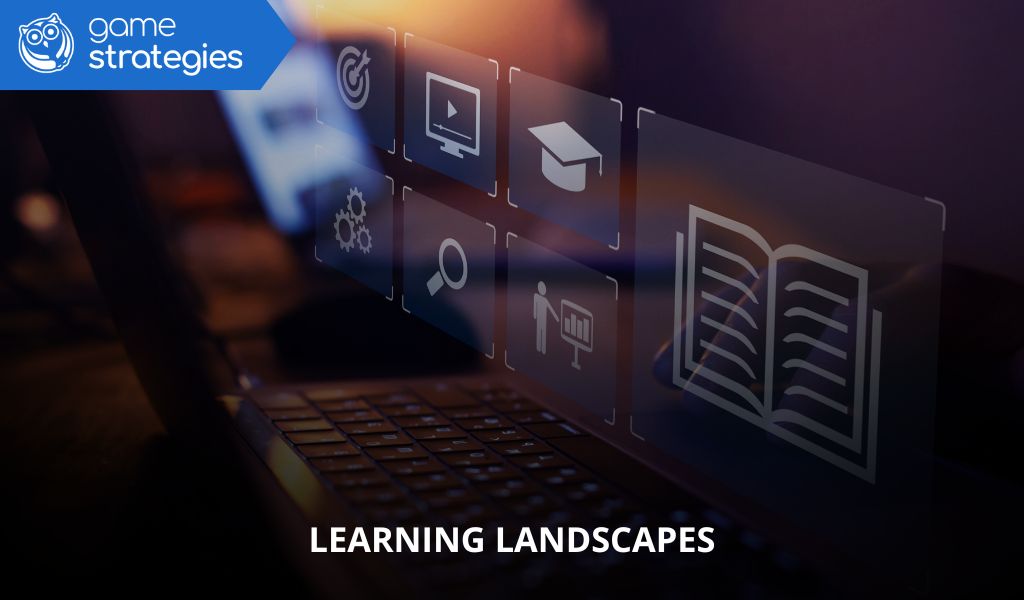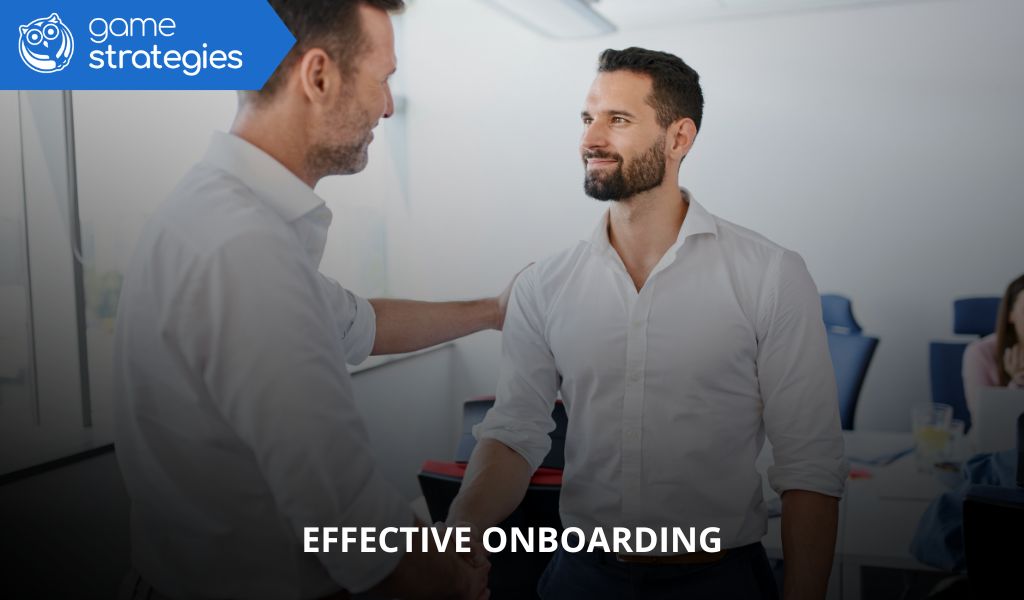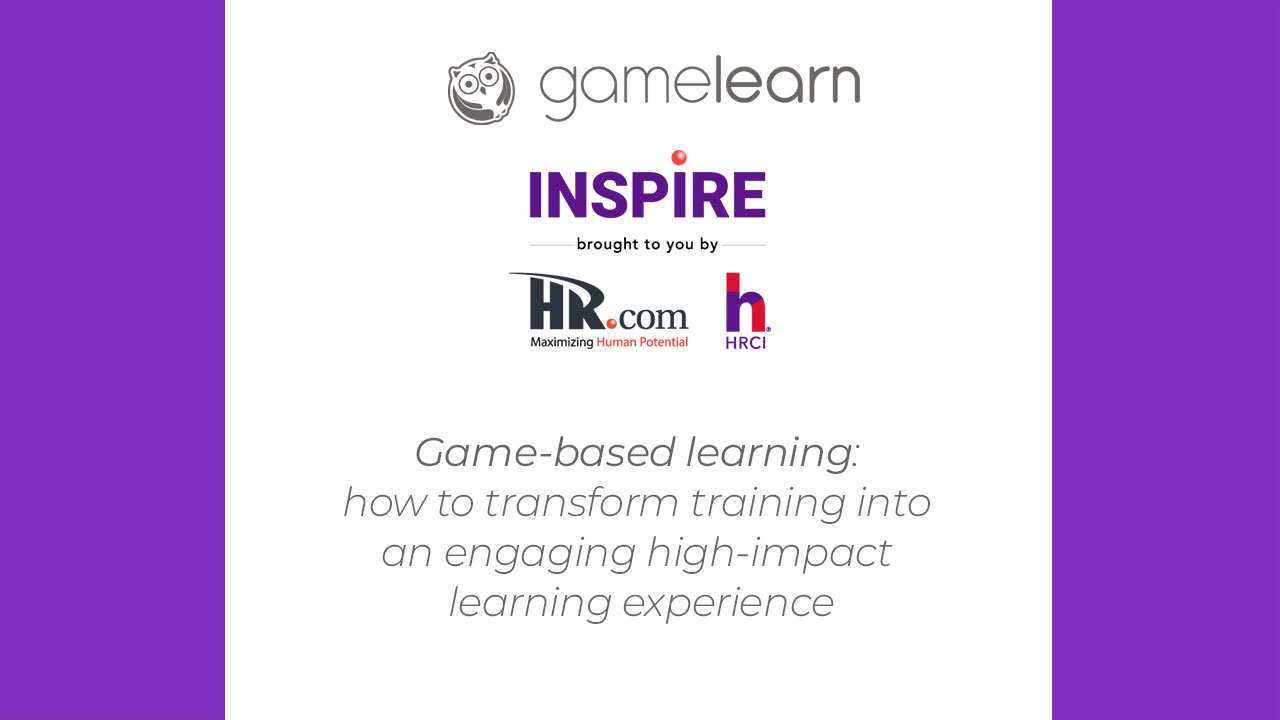Learning landscapes are reshaping how companies approach internal training. Originally developed in education, this methodology allows organisations to tailor content to each individual through personalised learning paths, visual environments and gamified experiences. In a corporate world that demands continuous, self-directed learning, this tool offers a flexible and effective alternative. At GameStrategies, we see learning landscapes as a driving force for change in team development. Below, we explore how they work, their benefits, and how to apply them in real business contexts.
What are learning landscapes and why do they matter to companies?
From education to professional development: a methodology that adapts
Learning landscapes were created to support different learning styles in the classroom by combining Bloom’s taxonomy with the theory of multiple intelligences. Over time, they’ve evolved into an effective tool for business training. Today, they’re used to design programmes that embrace cognitive diversity, foster motivation and promote self-led learning—resulting in higher engagement and knowledge retention.
What do learning landscapes have to do with personalisation in L&D?
One of the main challenges in learning and development is designing programmes that meet individual needs. Learning landscapes allow you to build customised learning routes, adapted to each person’s pace, interests and cognitive style. This personalisation enhances results, boosts engagement and strengthens a company-wide culture of continuous learning.
Benefits of learning landscapes in corporate environments
Flexibility, autonomy and engagement in team development
The modular structure of learning landscapes enables employees to move at their own pace, choosing between core and optional activities. This autonomy encourages critical thinking, increases motivation and turns training into an active, user-centred experience.
Visual tracking of progress and tailored development paths
Each learner can visually follow their own progress, reinforcing a sense of achievement and helping them identify areas for improvement. Routes can be tailored to the competencies each role requires, aligning with both personal growth and organisational objectives.
Ideal for reskilling, onboarding and leadership programmes
Learning landscapes are particularly valuable in times of change. Whether used in onboarding new staff or developing future leaders, they provide structured, dynamic and personalised experiences that support professional evolution.
How to design a corporate learning landscape

Step 1: define learning objectives and key skills
Start with a clear goal: what do you want to achieve? Identifying the learning outcomes and target skills helps you create a coherent route with aligned activities and defined evaluation criteria.
Step 2: design personalised learning itineraries
Create multiple paths based on different professional profiles. These should include a variety of activities—readings, exercises, group dynamics—designed to match different cognitive styles and offer meaningful learning experiences.
Step 3: integrate multimedia, challenges and interactive tools
Blend video, games, simulations or infographics into your learning landscape. These elements increase interest, improve content retention and encourage active participation.
Step 4: establish evaluation, feedback and gamified checkpoints
Set up mechanisms to track and assess progress. Use checkpoints, quizzes and continuous feedback to reinforce learning. Gamification adds a motivational layer through levels, badges and rewards.
Tools you can use to create interactive learning landscapes
Genially, Articulate, LMS platforms and no-code tools
Genially stands out for building visual, accessible training maps. Articulate helps you design structured routes, while corporate LMS platforms provide tracking and analytics. No-code tools simplify creation and speed up implementation without technical barriers.
How to integrate simulators or games into the learning journey
Simulators and gamified activities bring real-world scenarios into a safe learning space. When embedded in the learning landscape, they provide a practical, immersive experience tailored to the learner’s role—perfect for building cross-functional skills.
Real-world examples of learning landscapes in business
Learning path for new leaders in a hybrid environment
A tech company created a gamified journey for its emerging leaders. Through a futuristic narrative, participants tackled challenges around remote leadership, communication and conflict resolution. Each stage unlocked new learning content.
Personalised training plan for commercial teams
A retail company designed a learning landscape tailored to its sales teams. Based on experience levels, employees accessed relevant content such as sales techniques, negotiation strategies or objection handling. The journey included simulations and real-life challenges.
Digital upskilling through a modular interactive landscape
As part of its digital transformation, a service company built a learning landscape with modules on collaborative tools, automation and cybersecurity. Each module aligned with the unique needs of different roles across the organisation.
Want to implement personalised learning landscapes for your team? At GameStrategies.io we help you design tailored, no-code training experiences that drive engagement and deliver measurable impact.
¿De cuánta utilidad te ha parecido este contenido?
¡Haz clic en una estrella para puntuarlo!
Promedio de puntuación 5 / 5. Recuento de votos: 1
Hasta ahora, ¡no hay votos!. Sé el primero en puntuar este contenido.









